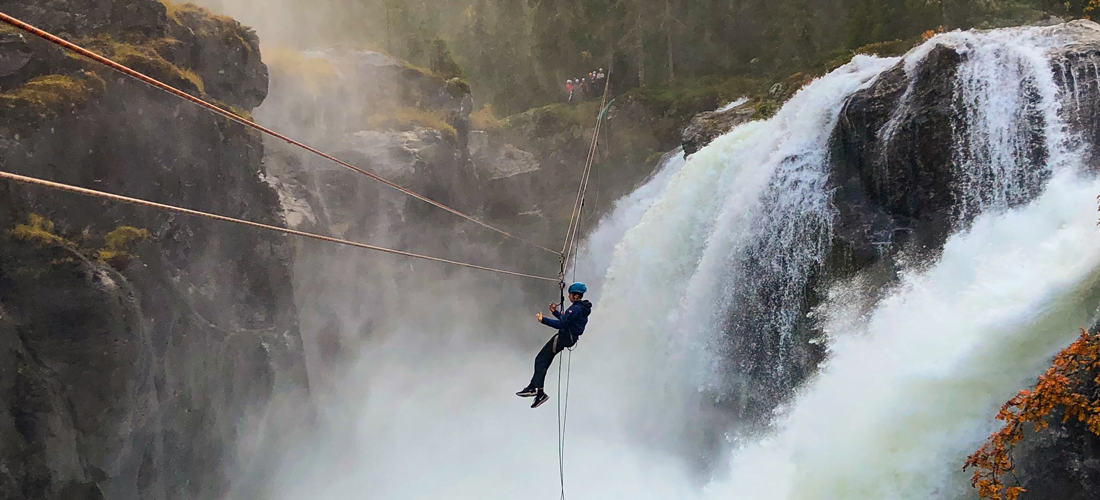Adventure therapy, you ask? Well, it’s a dynamic way of approaching therapeutic healing and personal growth by plunging into outdoor activities and natural environments. The idea is that through these adventures—like rock climbing, wilderness expeditions, or even ropes courses—you’re able to confront challenges and fears head-on. In this supportive yet challenging environment, you learn to build resilience, enhance self-esteem, and foster better interpersonal skills.
The past few years have seen a surge in its popularity. Why, you may wonder? Well, as more and more people are looking for holistic and novel approaches to wellness and mental health, the idea of combining therapy with the great outdoors seems a natural fit. The thrill of adventure combined with the tranquility of nature offers a unique therapeutic environment that resonates with a lot of folks. And thus, the growth of adventure therapy continues.
Benefits of Adventure Therapy
Adventure therapy is a unique therapeutic approach that offers a wide range of benefits for individuals facing various challenges. These benefits encompass physical, emotional, psychological, social, and personal growth aspects. Here’s a list of the key benefits of adventure therapy, along with a discussion of each:
1. Improved Self-Esteem and Self-Confidence
Adventure therapy offers you a unique opportunity to develop greater self-confidence and self-esteem. By engaging in challenging experiences outside of your comfort zone, you are not only exposed to new situations, but also to your own untapped capabilities. As you overcome obstacles and meet the challenges head-on, you naturally start to recognize your own strengths and resilience. This experience of accomplishment breeds confidence, and as your confidence grows, so does your self-esteem. So, it’s not just about conquering a climbing wall or navigating a kayak, it’s about discovering the power within you and learning to trust yourself in unfamiliar territories. This newfound self-belief and self-respect is one of the greatest gifts adventure therapy can offer you.
2. Enhanced Problem-Solving Skills
Adventure therapy isn’t just about having fun outdoors; it can significantly enhance your problem-solving skills too. When you’re out there, facing challenges that Mother Nature throws at you, you’re compelled to think on your feet. You have to assess situations swiftly, devise strategies, and execute them efficiently. These experiences aren’t confined to the wilderness; they translate into your everyday life. Overcoming obstacles on a rugged trail, for instance, can equip you with the resilience and creativity to navigate personal or professional issues with a fresh perspective. This is the beauty of adventure therapy, it goes beyond the adventure itself, cultivating in you a knack for problem-solving which can be a game-changer in your life.
3. Stress Reduction and Emotional Regulation
Adventure therapy has an incredible ability to reduce stress and help with emotional regulation. Picture yourself navigating a challenging hike or paddling down a rushing river. These experiences not only take you out of your everyday environment but also teach you to adapt and manage stress in real-time. You learn to face challenges head-on, respond adaptively, and gain confidence in your abilities. This skill transfers to your everyday life, helping you better manage stress and regulate your emotions. You begin to see obstacles as opportunities for growth, rather than threats. This shift in perspective is one of the fantastic benefits of adventure therapy. It’s not just about the adrenaline rush; it’s about learning to navigate the ups and downs of life.
4. Increased Physical Fitness and Wellness
Adventure therapy can be your gateway to a healthier and fitter you. Think about it: as you engage in outdoor activities, you are not just embarking on an adventure; you are also participating in a natural workout. Whether it’s hiking up a mountain, cycling through trails, or navigating through a forest, your body benefits from increased physical exertion. This natural exercise boosts your cardiovascular health, builds your muscular strength, and enhances your overall wellness. Over time, you’ll notice that you feel stronger, fitter, and more energetic – all thanks to the healing power of adventure therapy.
5. Connection to Nature and Its Therapeutic Effects
When you engage in adventure therapy, one of the significant benefits you’ll experience is a deep connection to nature. This bond, more therapeutic than you might initially appreciate, can offer profound healing effects. You see, nature isn’t just a backdrop for adventure—it’s a co-therapist. As you immerse yourself in the wilderness, the serenity and beauty of the outdoors work subtly yet powerfully to ease stress, boost mood, and promote a sense of well-being. Nature’s sounds, sights, and even smells can help calm your mind, lowering heart rate and blood pressure. In the midst of lush greenery or by a flowing stream, you’re not just adventuring—you’re also nurturing your mental and emotional health.
6. Building Trust and Teamwork
With adventure therapy, you’re not just exploring the great outdoors; you’re also constructing a pathway to trust and teamwork. As you scale mountains or navigate through challenging terrains, you’re compelled to rely on your fellow adventurers. This dependence fosters a strong bond of trust, a fundamental element in any relationship. Simultaneously, these adventurous pursuits demand collaboration and cooperation, where you learn to value each other’s strengths and compensate for the weaknesses. The end result? A team that’s not just bound by shared experiences, but one that’s fortified by trust, respect, and mutual understanding.
7. Personal Growth and Empowerment
Adventure therapy can be a transformative journey for you, leading to personal growth and empowerment. As you immerse yourself in challenging activities in the heart of nature, you break down barriers, push boundaries, and learn to overcome obstacles. This process encourages self-reflection, helps you understand your strengths, and fosters resilience. It’s not just about physical strength – it’s about finding your inner strength. With each challenge you conquer, you’ll gain confidence and a sense of accomplishment that permeates all areas of your life. Adventure therapy, thus, equips you with the tools to lead a more empowered life.
8. Reduction in Problem Behaviors
Engaging in adventure therapy propels individuals out of their comfort zones and into new, challenging environments that stimulate both physical and emotional growth. For at-risk youth, this form of therapy can serve as a powerful tool to disrupt patterns of avoidance, denial, or self-destructive behavior, replacing them with healthier coping strategies. Similarly, individuals grappling with addiction find in adventure therapy a way to rebuild their self-esteem, regain control, and learn to face life’s challenges head-on, rather than resorting to substance use. The immersive and experiential nature of adventure therapy taps into the healing power of the outdoors, fostering resilience, problem-solving skills, and a sense of accomplishment.
9. Sense of Adventure and Fun
You may find it surprising, but a sense of adventure and fun can indeed be therapeutic. Adventure therapy capitalizes on this very idea, inviting you to step out of your comfort zone, confront challenges head-on, and explore new territories, all while having fun. The excitement of embarking on an adventure can stimulate your mind positively, helping you to release stress, enhance focus, and foster resilience. There’s something inherently healing about this process. You’re not just having fun; you’re making meaningful progress in your journey towards emotional and psychological well-being.
Adventure Therapy – The Basics
You may be wondering where the concept of adventure therapy originated. Its roots can be traced back to the outdoor movement in the late 19th and early 20th centuries, when the idea of nature as a healing environment began to gain momentum. Early proponents of this movement recognized that challenges faced in the outdoors – such as navigating unfamiliar terrain or enduring harsh weather conditions – could parallel the challenges individuals face in their personal lives.
Thus, the application of outdoor experiences to therapeutic practices blossomed. Its history is a testament to the human capacity for resilience and the profound healing power of nature.
Key Principles and Components
Adventure therapy is a therapeutic approach that utilizes outdoor activities and challenges to promote personal growth, improve mental health, and enhance overall well-being. The key principles and components of adventure therapy are essential for its effectiveness and unique approach to healing. Here, we’ll discuss these principles and components in detail:
Outdoor Settings
- Natural Environment: Adventure therapy takes place in natural settings like forests, mountains, rivers, and wilderness areas. The natural environment provides a therapeutic backdrop that offers solitude, connection with nature, and a break from the routine of daily life.
- Therapeutic Landscapes: These settings serve as metaphors for life’s challenges, providing an opportunity for participants to connect with their inner selves and confront personal issues.
Group Dynamics
- Group Participation: Adventure therapy often involves small groups of participants who work together to complete challenges and activities. Group dynamics play a crucial role in building trust, communication, and cooperation.
- Supportive Community: The group setting fosters a sense of belonging, encourages peer support, and provides a platform for sharing experiences and insights.
Challenge-Based Activities
- Physical Challenges: Activities such as rock climbing, hiking, kayaking, or rope courses offer physical challenges that push participants out of their comfort zones. These challenges help individuals build self-confidence and resilience.
- Mental Challenges: Problem-solving, decision-making, and goal-setting are integral to adventure therapy. Participants are encouraged to overcome mental obstacles and develop coping strategies.
- Emotional Challenges: Adventure therapy can evoke strong emotions and stressors. Participants learn to manage their emotions, confront fears, and address past traumas in a supportive environment.
Experiential Learning
- Learning by Doing: Adventure therapy prioritizes experiential learning, allowing participants to learn through direct experience rather than theoretical knowledge. This hands-on approach can lead to profound insights and personal growth.
- Reflection and Processing: After each activity, participants engage in group discussions or individual reflections to explore how their experiences relate to their personal lives. This self-reflection is a crucial part of the therapeutic process.
Therapeutic Relationship
- Trained Facilitators: Adventure therapy sessions are led by trained and certified facilitators who create a safe and supportive environment. These professionals guide participants through activities, provide feedback, and offer emotional support.
- Trust and Rapport: Building trust between participants and facilitators is essential. Trust allows participants to open up, share their thoughts and feelings, and fully engage in the therapeutic process.
Holistic Approach
- Mind-Body Connection: Adventure therapy recognizes the interconnectedness of mental, emotional, and physical well-being. Activities promote physical fitness, which can have a positive impact on mental health.
- Spiritual Connection: Many adventure therapy participants report feeling a spiritual connection to nature or a sense of transcendence during their experiences.
Client-Centered and Goal-Oriented
- Individualized Goals: Adventure therapy is tailored to each participant’s unique needs and goals. Therapists work with individuals to identify specific objectives for their therapy.
- Measurable Outcomes: Progress is tracked and measured throughout the therapy process. Participants set goals, achieve milestones, and gain a sense of accomplishment.
Safety and Risk Management
- Safety Protocols: Adventure therapy programs prioritize safety, with trained staff conducting risk assessments, providing appropriate equipment, and implementing safety procedures.
- Informed Consent: Participants are informed about the risks associated with adventure therapy activities and provide consent to participate.
By adhering to these key principles and components, adventure therapy offers a holistic and transformative approach to personal growth and healing. It empowers individuals to overcome challenges, develop life skills, and achieve positive therapeutic outcomes.
Frequently Asked Questions
Who created adventure therapy?
Adventure therapy, a dynamic form of experiential therapy, was primarily pioneered by the efforts of Dr. Michael A. Gass in the 1980s. Dr. Gass, a professor at the University of New Hampshire, utilized outdoor environments and adventure activities as therapeutic interventions, facilitating personal growth and healing. His innovative approach to therapy marked a significant shift in traditional therapeutic methods, bridging the gap between nature and mental health.
What is an example of adventure therapy?
An example of adventure therapy can be seen in wilderness therapy programs. These are therapeutic interventions that involve immersive experiences in nature, often in group settings. Participants may engage in activities such as backpacking, rock climbing, or canoeing. The challenges and obstacles faced during these activities serve as metaphors for the difficulties experienced in personal life. Participants learn valuable skills like problem-solving, teamwork, and resilience, which they can apply to overcome their personal issues. Adventure therapy provides a nurturing yet challenging environment that facilitates self-discovery, healing, and personal growth.
Why does adventure therapy work?
Adventure therapy works because it combines the thrill of physical activity with the self-awareness and introspection of psychotherapy. The great outdoors provides a natural setting that helps participants disconnect from their daily stresses and reconnect with themselves. The challenges faced during adventure activities serve as metaphors for the obstacles encountered in real life. Overcoming these challenges imbues participants with a sense of accomplishment and builds resilience, which can be applied to real-world problems. Moreover, the group dynamics in adventure therapy foster communication, trust, and cooperation—essential skills for healthy relationships and emotional well-being.
Is adventure therapy the same as wilderness therapy?
While there’s often some overlap between adventure therapy and wilderness therapy, they’re not quite the same thing. Adventure therapy is a broader term that encompasses therapeutic practices involving outdoor activities and challenges, which could be anything from rock climbing to team-building exercises. On the other hand, wilderness therapy specifically refers to immersive programs that take place in wilderness settings, where participants live in nature over a period of time. Although both utilize the healing power of the outdoors, the focus and methodologies may differ.










